Life
Sleep Out brings home the reality of homelessness
'A lot of people don’t realize ... what it’s like to, in a moment, lose everything'
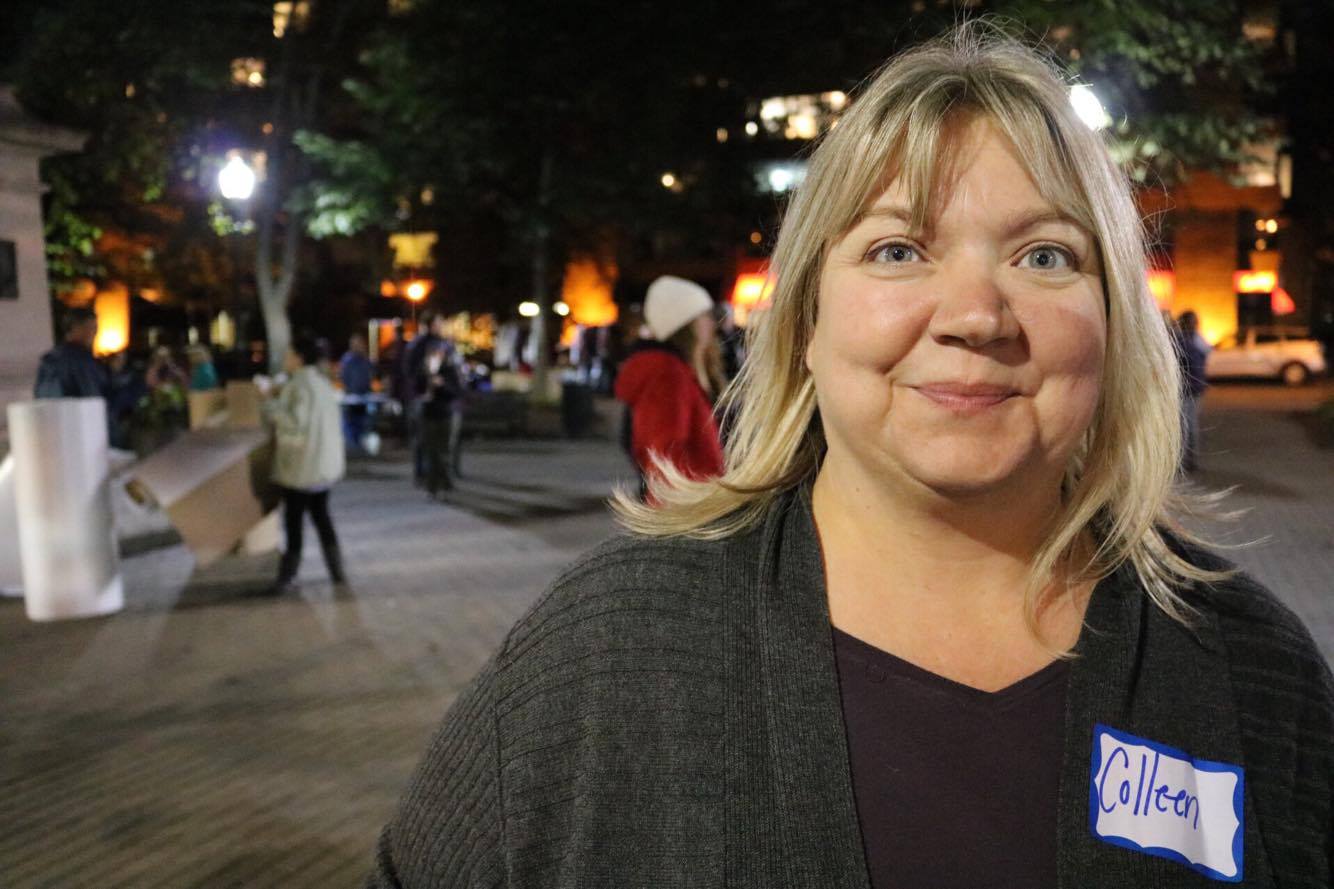
caption
Colleen Ritchie at Shelter Nova Scotia’s fourth annual Sleep Out.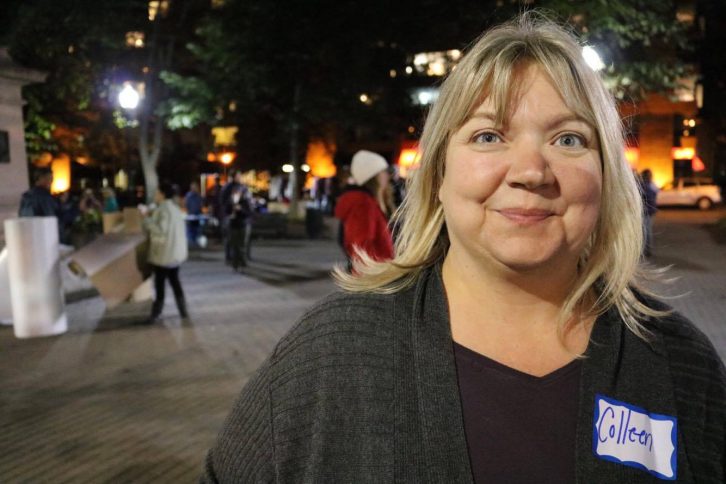
caption
Colleen Ritchie at Shelter Nova Scotia’s fourth annual Sleep Out.On the first evening of October, buses screeched to a halt on Spring Garden Road as weekend bar goers headed downtown.
In Victoria Park on South Park Street in Halifax, trees stood over empty benches not yet covered by winter’s frost. Between 11 p.m. and 6 a.m., the park appeared deserted at first glance – but under the street lamps were dozens of people sleeping on sheets of cardboard.
It was Shelter Nova Scotia’s fourth annual Sleep Out for Homelessness.
With more than 70 registered ”sleepers,” the non-profit organization held an evening of reflection in order to raise money for its efforts to find housing for needy people. Small discussion groups were led by volunteers of Shelter Nova Scotia to change the conversation about marginalization and homelessness.
For last year’s Sleep Out, 100 people registered and raised more than $50,000. This year’s event brought in $30,000.
Dakota Harnish, who attended this year, sees it as a great starting-point for people to connect with what homeless people are going through.
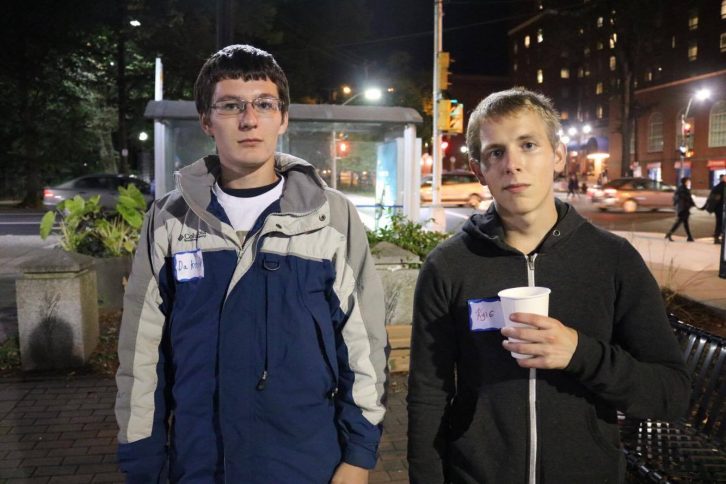
caption
Dakota Harnish, left, and Kyle Weare attended the Shelter Nova Scotia’s Sleep Out.Harnish says due to social situations and poor money management he’s sometimes struggled to find a place to sleep.
“Over the years I’ve been in on-and-off situations that have actually resulted in me being homeless,” he says.
“What a lot of people don’t realize is they live in a home, they work a day-to-day job, they have everything and they don’t realize what it’s like to, in a moment, lose everything.”
Sleepers arrived at 6 p.m. and received a piece of cardboard and foam underlay to sleep on. Attendees were allowed to bring a sleeping bag and pillow.
The evening started with icebreakers and small group discussions. Participants were given one coffee break in the evening and another in the morning.
Once 11 p.m. rolled around, sleepers were encouraged to find a spot in the park to place their cardboard and settle in for the night.
Shelter Nova Scotia’s communications and fund development specialist, Colleen Ritchie, says it wouldn’t feel right to hold a gala or party to raise funds for the organization, while advocating for people who “don’t have anything sometimes.”
Ritchie says the goal of the Sleep Out is to eliminate the stereotypes and stigma surrounding homelessness.
“Sometimes who people think we serve isn’t who we’re actually serving because it can be anybody: families, veterans, single people, people who suffer from mental health concerns, people who have disabilities.”
Shelter Nova Scotia
Shelter Nova Scotia has 88 employees and three supportive housing workers serving 237 homeless people. In 2015, the organization provided housing for an average of 35 people per night at four locations: Barry House, Metro Turning Point, Sir Sandford Fleming House and Nehiley House.
According to its 2016 Annual Report, 85 people were moved from homelessness to community housing.
A visual
In the middle of Victoria Park, set of bunk beds with neatly made sheets was displayed. It was taken from Metro Turning Point and placed there for the evening, to show what it’s like to live in a shelter.
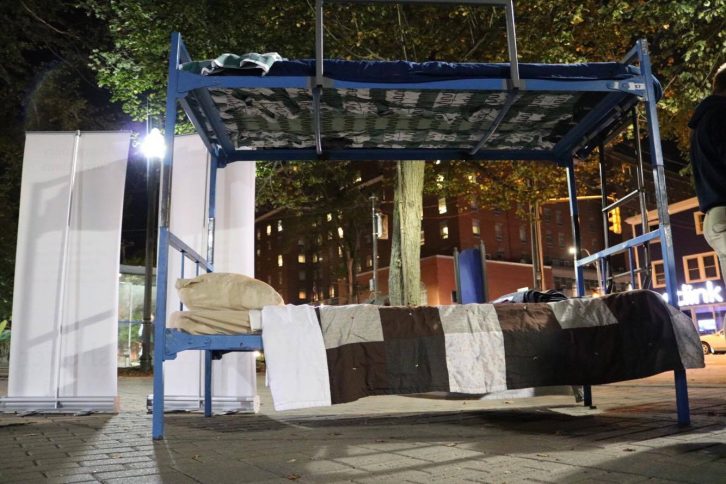
caption
Bunk beds from Metro Turning Point placed in Victoria Park by Shelter Nova Scotia.Reflection
Each Sleeper was given a journal at the beginning of the evening to record information and write down their thoughts. Tracey Roren picked a tree in the park to rest on her cardboard and write in her journal.
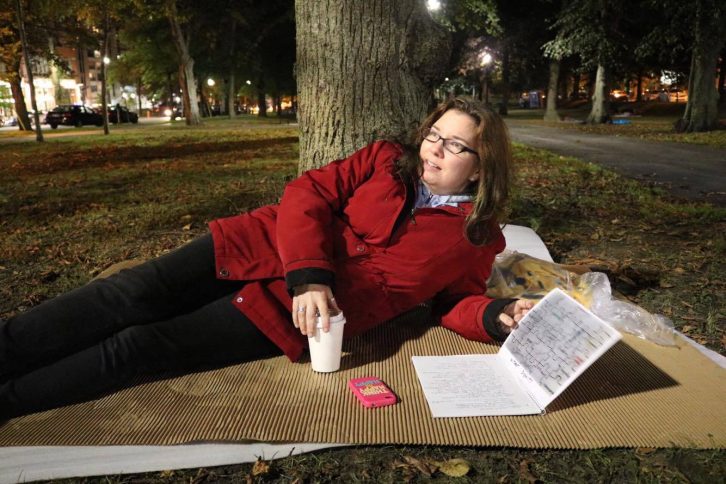
caption
Tracey Roren rests on her cardboard at the Sleep Out with her journal.In Boston, at a young age, she remembers seeing a homless person for the first time – an older woman digging through garbage.
“It had a profound affect on me. I just thought wow, that’s somebody’s grandmother or mom and they have to resort to that and it was scary.”
Standing in the Gap
The night was like an ordinary Friday evening for Pat Pilgrim. For the last seven years, Pilgrim has driven a van around Halifax every second Friday night from 11:30 p.m. to 3 a.m. providing snacks, hot drinks, water and blankets to people sleeping on the streets.
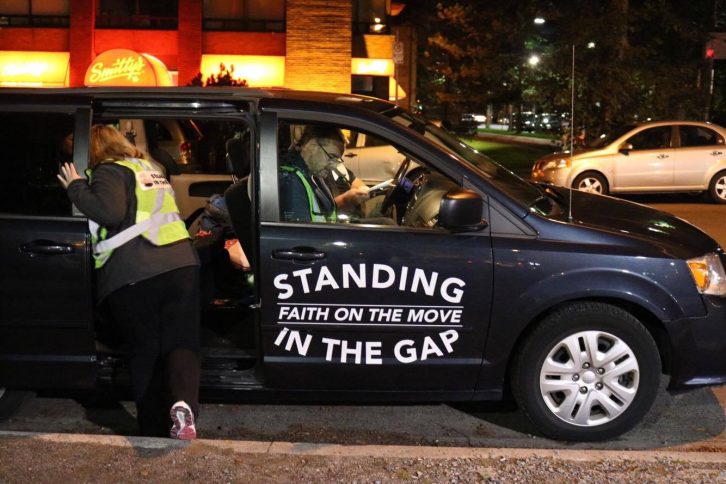
caption
Sleepers pile into the Standing in the Gap’s van to help with their weekly drive.Pilgrim volunteers for Standing in the Gap, an outreach organization funded by donations given to the Faith Tabernacle Church. Each night the organization serves about 25 to 30 people during the summer months and as many as 10 during the winter.
“We record every name and try to remember them. We write down their birthdays and bring them something,” says Pilgrim.
“I just want to serve and help people.”
